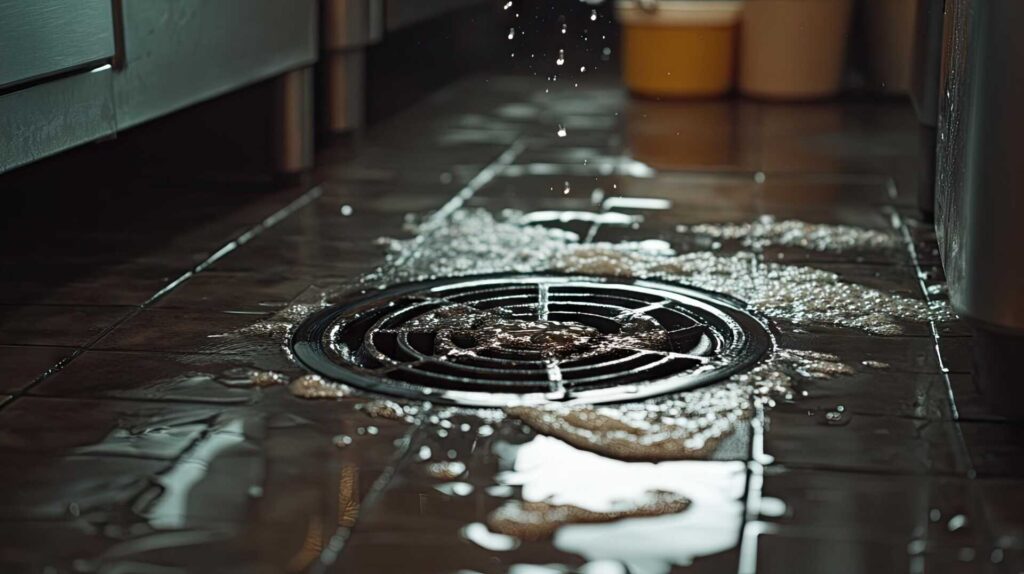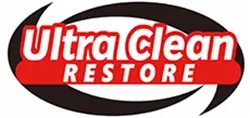
Contents
When faced with sewage damage, you need a structured approach to minimize costs and health risks. Evaluating the damage promptly is essential, as is containing leaks to prevent further issues. Using budget-friendly materials can also make a significant difference. However, understanding when to tackle repairs yourself versus hiring professionals is key. Let’s explore these aspects further to ensure you’re prepared for effective sewage cleanup and repair.
Key Takeaways
- Assess the sewage damage and contain the leak immediately to prevent further contamination and minimize cleanup costs.
- Use budget-friendly materials like waterproof tape for repairs and eco-friendly products for odor neutralization and maintenance.
- Consider DIY cleanup for minor spills, but hire professionals for extensive contamination to ensure safety and thorough restoration.
- Document all damage with photos for insurance claims, as homeowner’s policies may cover cleanup expenses.
- Regular maintenance checks can prevent small issues from escalating, saving on future repair costs and promoting responsible homeownership.
Understanding Sewage Damage and Its Risks
When you experience sewage damage, understanding its implications is essential for effective cleanup and repair. Sewage contamination risks are significant and can lead to serious health hazards if not addressed promptly. Contaminated water can harbor harmful pathogens, bacteria, and viruses, posing threats like gastrointestinal illnesses and respiratory problems.
It’s important to recognize that even seemingly minor spills can escalate into major health concerns if they’re ignored. To safeguard your health and the well-being of your loved ones, you must assess the extent of contamination. Identify affected areas and materials, as porous surfaces can absorb toxins, complicating the cleanup process.
Prioritize personal safety by wearing protective gear when dealing with sewage. Additionally, consider consulting professionals experienced in sewage cleanup, as their expertise can help mitigate risks and ensure a thorough restoration.
Understanding these factors empowers you to make informed decisions and fosters a sense of belonging in a community that values health and safety.
Initial Steps for Sewage Cleanup
Before diving into the cleanup process, it’s vital to take immediate action to minimize health risks and property damage.
Start with an initial assessment of the affected area. Identify the source of the sewage leak and contain it if possible—this helps prevent further contamination.
Next, prioritize safety precautions. Wear protective gear, including gloves, masks, and boots, to shield yourself from harmful bacteria and pathogens.
Ensure adequate ventilation in the affected space to reduce airborne contaminants.
If the sewage has spread to electrical systems or appliances, turn off the power to avoid electrocution.
Document the damage for insurance purposes, taking photos of the affected areas.
Essential Tools and Supplies Needed
After ensuring safety and containing the sewage leak, gathering the right tools and supplies is essential for an effective cleanup.
First, invest in proper safety equipment, including gloves, masks, and goggles, to protect yourself from harmful pathogens. Next, assemble cleanup kits that contain disinfectants, absorbent materials, and heavy-duty trash bags. These kits streamline the process and ensure you have everything on hand.
You’ll also need a wet/dry vacuum to remove excess water and debris efficiently. Don’t forget a mop and bucket for final cleaning. For larger areas, a squeegee can help remove residual moisture.
If you’re facing a more extensive problem, consider a pump to expedite the removal process. The right tools enhance your effectiveness and foster a sense of community by encouraging shared responsibility in tackling such challenges.
Equip yourself well, and you’ll navigate the cleanup with confidence.
DIY vs. Professional Sewage Cleanup
Deciding between DIY and professional sewage cleanup can greatly impact the outcome of the situation. If you’re considering a DIY approach, it’s vital to prioritize sewage safety. Familiarize yourself with effective cleanup techniques, like using appropriate personal protective equipment and disinfectants.
However, assess your expertise and the severity of the issue; minor spills may be manageable, but extensive contamination could pose health risks.
On the other hand, professional services bring specialized knowledge and equipment. They’re trained in thorough cleanup techniques that ensure your home is completely sanitized, reducing the risk of future problems.
While hiring experts may seem costly, it often saves you time and potential health hazards in the long run.
Ultimately, weigh factors like the extent of the damage, your comfort level with cleanup tasks, and your budget. Making an informed choice can lead to a safer, more effective resolution for your sewage issue.
Cost-Efficient Repair Techniques
When tackling sewage repairs, you can utilize DIY strategies to save costs while effectively addressing the issue.
By selecting budget-friendly materials, you can enhance the durability of your repairs without overspending.
Let’s explore practical techniques that keep your expenses down while ensuring a thorough cleanup.
DIY Repair Strategies
While sewage problems can be challenging, tackling repairs yourself can save you significant costs and restore your space efficiently.
Start by addressing sewage odor and preventing mold growth with these DIY strategies:
Seal leaks and cracks in pipes with waterproof tape or epoxy to minimize water exposure.
Use vinegar and baking soda to neutralize odors and keep drains clean, effectively reducing the risk of mold.
Install a dehumidifier to control moisture levels in your home, further aiding in mold prevention.
Budget-Friendly Materials
Choosing the right materials for sewage cleanup and repair can significantly affect cost and effectiveness. You’ll want to evaluate eco-friendly materials that help the environment and reduce long-term expenses.
Look for recycled options, like reclaimed wood or recycled concrete, which can provide sturdy solutions without breaking the bank. When selecting cleaners, choose biodegradable products that minimize harm to both your home and the ecosystem.
Additionally, using non-toxic sealants can prevent future contamination while being budget-conscious. By prioritizing these cost-efficient materials, you’ll create a safe and sustainable environment, ensuring your repairs are effective and responsible.
Embrace these options to foster a sense of belonging in your community, promoting eco-conscious practices together.
Preventative Measures to Avoid Future Issues
To prevent future sewage issues, implement regular maintenance checks to identify potential problems early.
Make certain you dispose of waste properly to avoid clogging your plumbing system.
Additionally, consider upgrading your plumbing infrastructure to enhance efficiency and reduce the risk of backups.
Regular Maintenance Checks
Regular maintenance checks are essential for preventing sewage-related issues before they escalate into costly repairs.
By implementing preventive maintenance and conducting routine inspections, you can save yourself from future headaches and expenses.
Here are three key areas to focus on during your checks:
- Inspect pipes and connections for leaks or corrosion.
- Clean and clear any blockages in drains and sewer lines.
- Monitor the condition of your sewage system’s components, such as sump pumps and backflow valves.
Proper Waste Disposal
Maintaining your sewage system goes beyond routine inspections; proper waste disposal plays a crucial role in preventing future issues.
By adopting effective waste management practices, you can greatly reduce the risk of blockages and overflows. Always dispose of non-biodegradable items, such as plastics and chemicals, through eco-friendly disposal methods. Consider utilizing local recycling programs and hazardous waste collections to ensure safe disposal.
Additionally, educate your household about what can and can’t go down the drain. Implementing these practices protects your sewage system and promotes environmental sustainability.
Plumbing System Upgrades
Upgrading your plumbing system can greatly reduce the likelihood of future sewage issues, especially when you prioritize proactive measures.
By implementing these plumbing upgrades, you enhance system efficiency and protect your home from potential disasters:
Install backflow prevention devices to stop sewage from entering your home during heavy rains or line blockages.
Replace outdated pipes with modern materials, like PVC or PEX, to minimize leaks and bursts.
Invest in regular maintenance checks to identify and address small issues before they escalate into costly repairs.
Taking these steps safeguards your property and fosters a sense of community by encouraging responsible homeownership.
Resources for Affordable Cleanup Services
How can you find affordable sewage cleanup services when disaster strikes? Start by tapping into local resources, as many communities offer assistance programs or grants for disaster recovery.
Look for nonprofit organizations that specialize in environmental cleanup; they often provide services at reduced rates.
Next, use online platforms to compare prices and read reviews about local cleanup services. Websites like Yelp or Angie’s List can help you identify reputable companies that prioritize customer satisfaction.
Don’t hesitate to ask for quotes from multiple providers—this allows you to negotiate better rates.
Also, check with your homeowner’s insurance to see if they cover sewage cleanup; this can greatly offset costs.
By leveraging these local resources, you can secure affordable cleanup services that meet your needs without sacrificing quality.
Summary
In the face of sewage damage, timely action isn’t just important—it’s essential. By following this guide, you can tackle cleanup and repairs without breaking the bank. Remember, prevention is always cheaper than the cure; regular maintenance checks can save you from bigger headaches down the line. So, arm yourself with knowledge, budget-friendly materials, and a proactive mindset. In the end, a clean, safe environment is worth the effort and investment. Don’t wait for disaster to strike.
Recent Posts
Why Choose Professional Mold Remediation Services?
Regarding mold issues, relying on professional mold remediation services can make a significant difference. Mold
7 Steps for Professional Mold Remediation
When it comes to mold remediation, understanding the process is essential for effective results. You’ll
Expert Mold Remediation After Water Damage
When water damage occurs, mold can quickly become a serious issue. You might not realize
